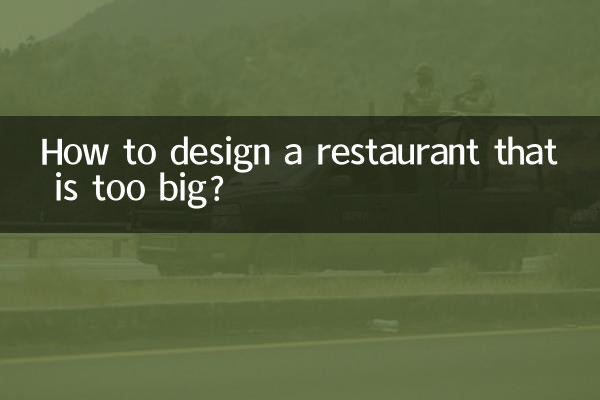How to design a restaurant if the space is too large? Clever layout improves space utilization and customer experience
In recent years, the design trend in the catering industry has gradually shifted from compact to open. However, if an overly large space is not designed properly, it can easily appear empty and deserted, and even affect operational efficiency. This article will combine the hot topics and hot content on the Internet in the past 10 days to provide you withStructured solutions for the design of large restaurant spaces, covering core elements such as functional partitioning, visual focus, and circulation optimization.
1. Inventory of hot topics in catering design in the past 10 days

| hot topics | attention index | Relevant design suggestions |
|---|---|---|
| “Immersive dining experience” | ★★★★★ | Divide large spaces through themed scenes |
| “Social restaurant layout” | ★★★★☆ | Add interactive areas (such as shared long tables) |
| "Green plant partition design" | ★★★☆☆ | Naturally divide space and purify air |
| "Changeable Furniture Application" | ★★★☆☆ | Flexible adjustment of seating density |
2. Core strategies for large space restaurant design
1. Functional zoning: multi-level space division
It is recommended to divide the restaurant intoDining area, waiting area, display area, interactive areaFour modules, proportion reference:
| Ribbon | Recommended proportion | Design points |
|---|---|---|
| core dining area | 60%-70% | Mixed tables for 2-4 people and private rooms for 8-10 people |
| Featured interactive area | 15%-20% | Such as self-service condiment table and photo background wall |
| transition buffer zone | 10%-15% | Green plants/art installations as soft partitions |
2. Visual focus: creating a sense of hierarchy
•central art installation: Hanging chandelier or large sculpture
•Dynamic projection on wall: Recently popular digital decoration method
•Ground level difference: Elevate the VIP area to increase privacy
3. Movement route optimization: double circulation route design
The latest research from the popular catering account @Space Design Magazine shows:78% of customers dislike taking detours to get food. It is recommended to use:
•Service flow: Backstage → Food preparation area → Shortest path to each partition
•Customer flow: Entrance → waiting area → seats → restrooms without crossing
3. Cost-benefit analysis
| design elements | input cost | Improved efficiency |
|---|---|---|
| Modular partition | in | Turnover rate +15% |
| Intelligent lighting system | high | Evening passenger flow +22% |
| convertible furniture | low | Space utilization +30% |
4. References to successful cases
1.Guangzhou "Yunjing" Restaurant: The 2000㎡ space realizes day and night mode switching through atomized glass partitions
2.Chengdu "Zhuxuan" hot pot restaurant: 12 "small boxes" are divided into 3 meters high simulated bamboo forest
Conclusion:Large space restaurant design needs to take into considerationPracticality and aesthetic experience, through structured partitioning, intelligent technology application and integration of hot elements, the spatial disadvantages are transformed into brand features. Only by regularly collecting customer flow data and adjusting the layout can we continue to improve our competitiveness.

check the details

check the details